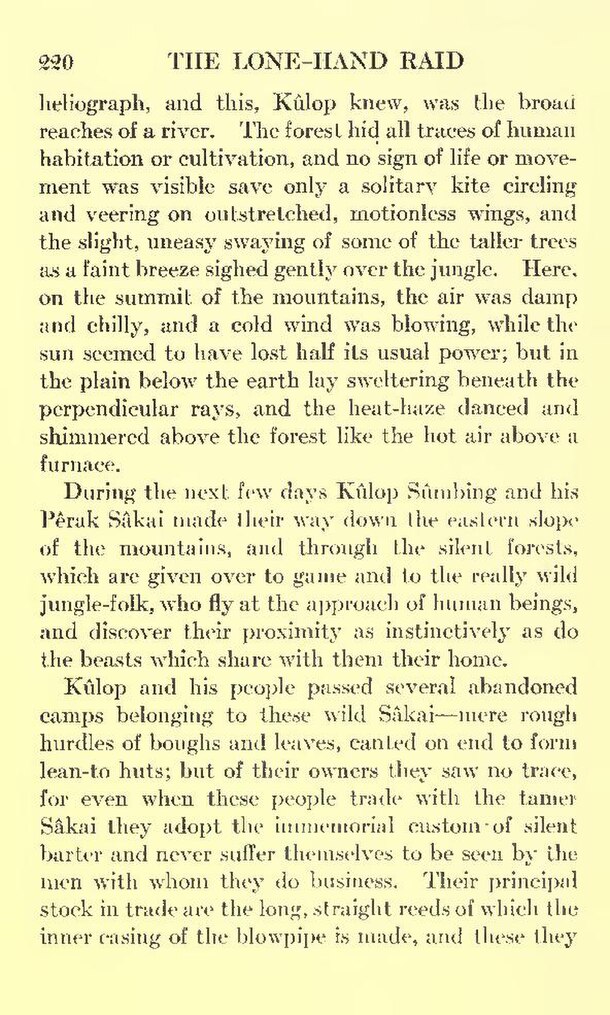heliograph, and this, Kûlop knew, was the broad reaches of a river. The forest hid all traces of human habitation or cultivation, and no sign of life or movement was visible save only a solitary kite circling and veering on outstretched, motionless wings, and the slight, uneasy swaying of some of the taller trees as a faint breeze sighed gently over the jungle. Here. on the summit of the mountains, the air was damp and chilly, and a cold wind was blowing, while the sun seemed to have lost half its usual power; but in the plain below the earth lay sweltering beneath the perpendicular rays, and the heat-haze danced and shimmered above the forest like the hot air above a furnace.
During the next few days Kûlop Sûmbing and his Pêrak Sâkai made their way down the eastern slope of the mountains, and through the silent forests, which are given over to game and to the really wild jungle-folk, who fly at the approach of human beings, and discover their proximity as instinctively as do the beasts which share with them their home.
Kûlop and his people passed several abandoned camps belonging to these wild Sâkai—mere rough hurdles of boughs and leaves, canted on end to form lean-to huts; but of their owners they saw no trace, for even when these people trade with the tamer Sâkai they adopt the immemorial custom of silent barter and never suffer themselves to be seen by the men with whom they do business. Their principal stock in trade are the long, straight reeds of which the inner casing of the blowpipe is made, and these they
